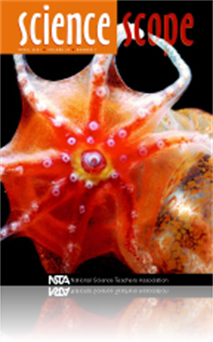All Resources
Journal Article
How a Dragon Gets its Wings: A fanciful approach to teaching meiosis
The process of meiosis and its contributon to genetic variation are important concepts. But they are challenging for students, many of whom confuse meiosis with mitosis because of the similar terminology and likenesses in how chromosomes align during...
Journal Article
Eyes in the Sky: The Big Picture
Boost your students’ learning experience by using satellite imagery in the classroom. In the activity described here, students assume the roles of research scientists. They work in groups and analyze satellite imagery to investigate the effects of ...
Journal Article
Chemistry on Camera: Integrating technology into the science laboratory
Identifying useful, effective, and feasible methods of integrating technology into science classrooms is very important and can be challenging. With this in mind, this article features a relevant, innovative lab exercise that promotes construction of...



